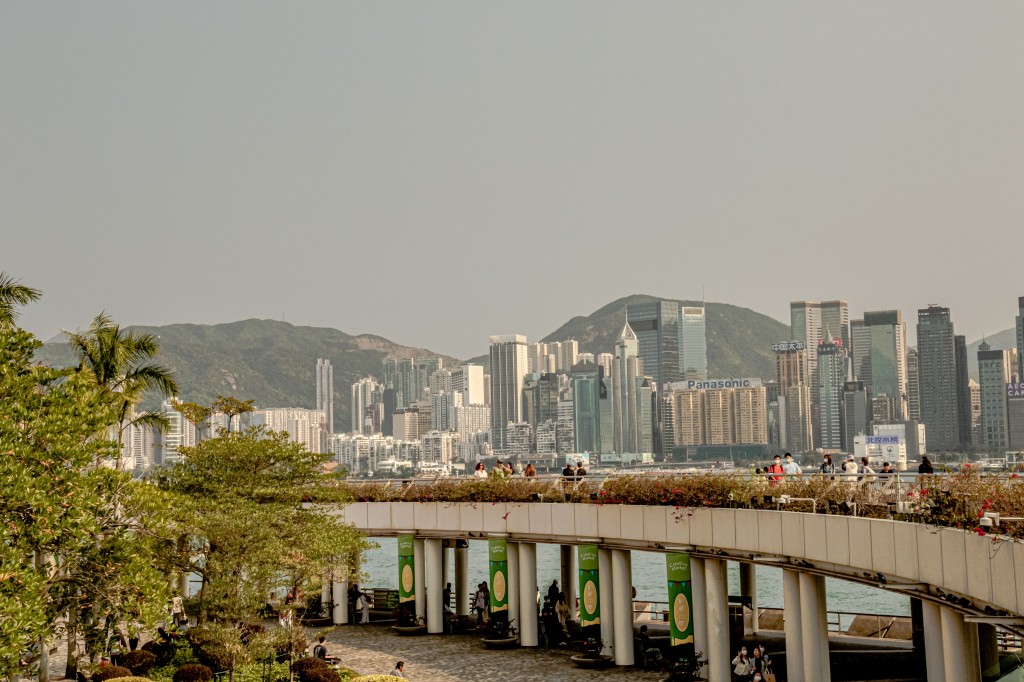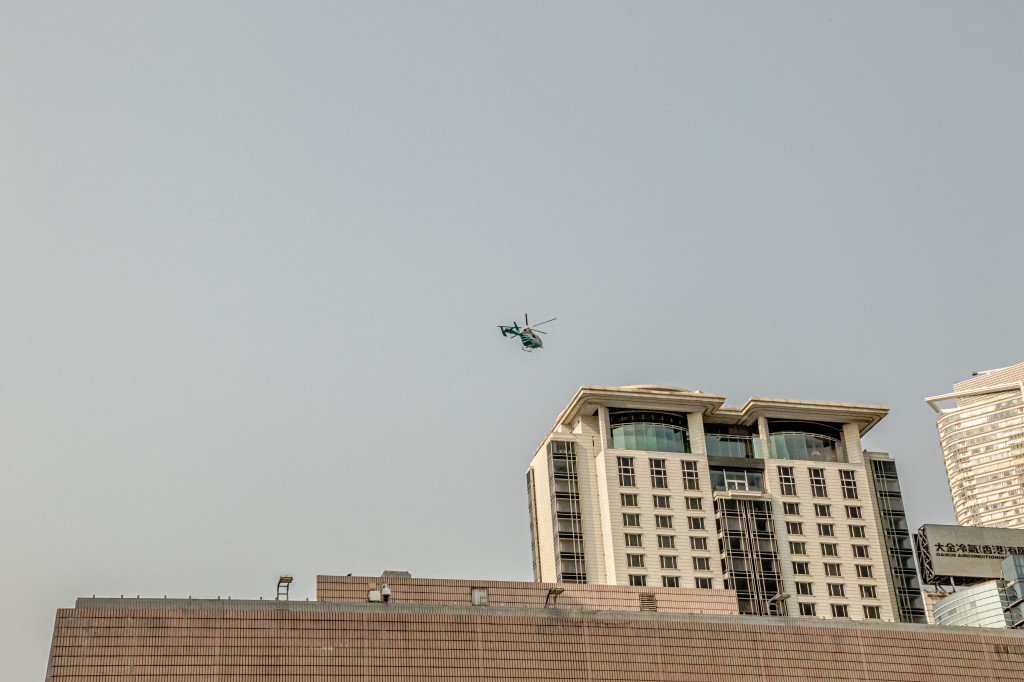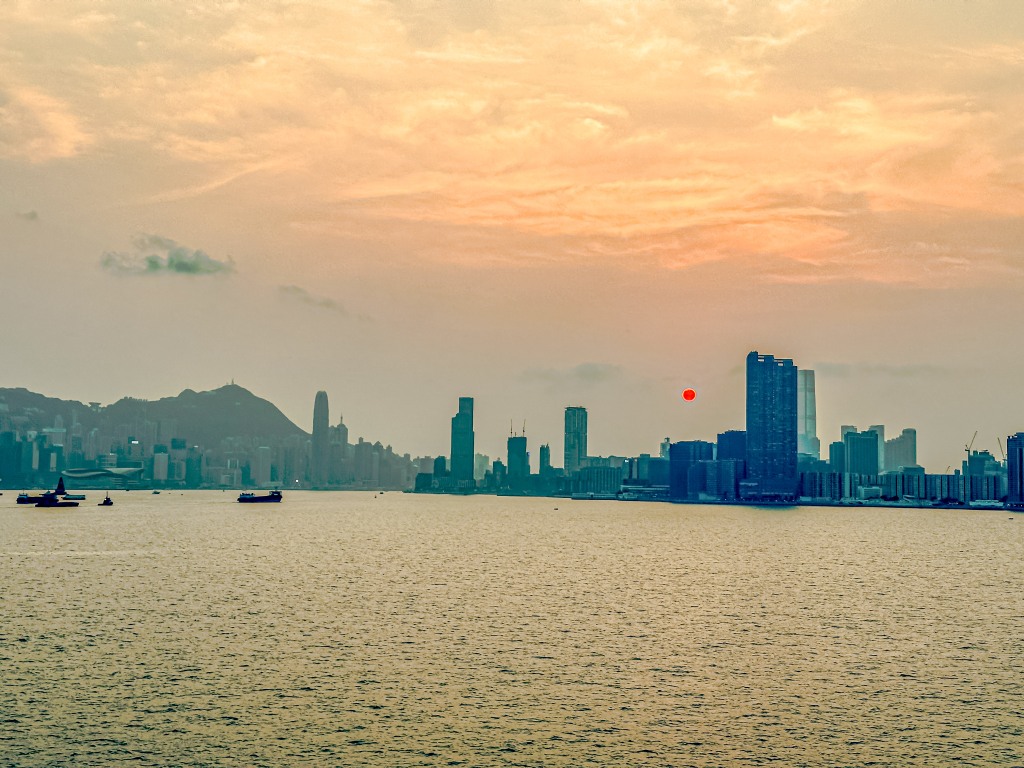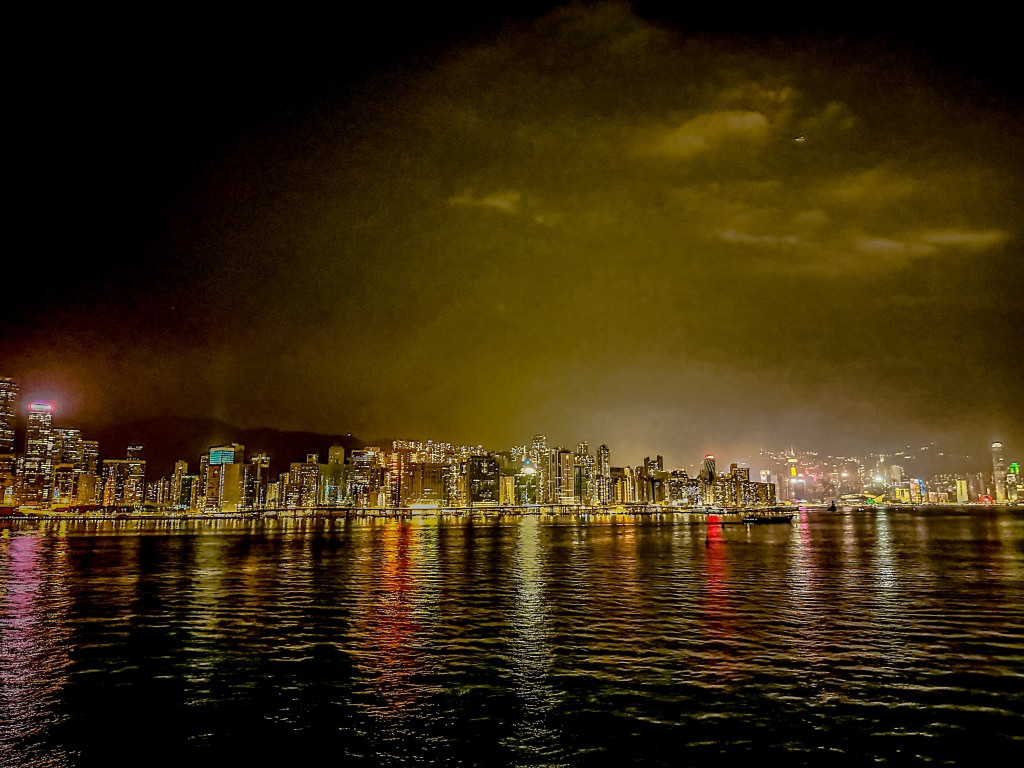March 11, 2023:

Wow! Just wow! Jim and I have long wanted to visit Hong Kong and learn more about this fascinating vibrant city on the water. Unfortunately, through Covid at least two trips we had booked here canceled, and in fact, airport stop here in Hong Kong was originally canceled on this itinerary but then replaced. we only had a day here so Jim and I decided to maximize our ability to see as much as possible, and so we hired a private car and guide for the day. It proved to be a great decision, because we were able to cross almost everything off of our wish list for sightseeing. Our guide for the day was a real dream, and gave us not only all the facts about the sites we were visiting, but also a heavy dose of local custom and culture. It was fabulous!

Normally, I would give you a heavy dose of history about this fabled city, but we saw and experienced so much that there probably isn’t room in this post to cover at all. We arrived into what had been the old airport area (KaiTek International airport), which has been converted into a huge new cruise terminal in the Kowloon section of the metropolis. Kowloon means nine dragons, and it is now the new central business district. Hong Kong is a Special Administrative Region (SAR) of China, which according to the treaty signed between Britain and China in 1997, when Britain relinquished control over Hong Kong to China, China was bound to administer Hong Kong for a fifty-year period in the same ways that it had been operated under British rule. The “One country, Two Systems” pact was to have guaranteed to the citizens of Hong Kong the same rights and privileges they had enjoyed under British rule, including free elections and speech. As you know from recent news articles, China has breached this agreement, and is rapidly moving to impose the same limits on Hong Kong that mainland Chinese endure. Our guide told us that numerous of his friends who were born and raised in Hong Kong have moved to Britain and other Commonwealth countries because of the changes.
Before our visit, we had fortunately had several lectures onboard about Chinese culture and traditions, which really helped us appreciate and understand what we saw. For example, dragons are a symbol of strength and nobility. Generally, they are believed to live in the mountains, and a path must be left for them to get to the sea. So on many of the high-rise buildings, there is a central opening in the building to let the dragons through (a “dragon gate”). There are 18,000 buildings over 18 stories (which is the definition of a high rise), and since typhoons are a regular threat, maybe it’s just smart engineering to reduce the stress on those broad glass exposures facing the sea.
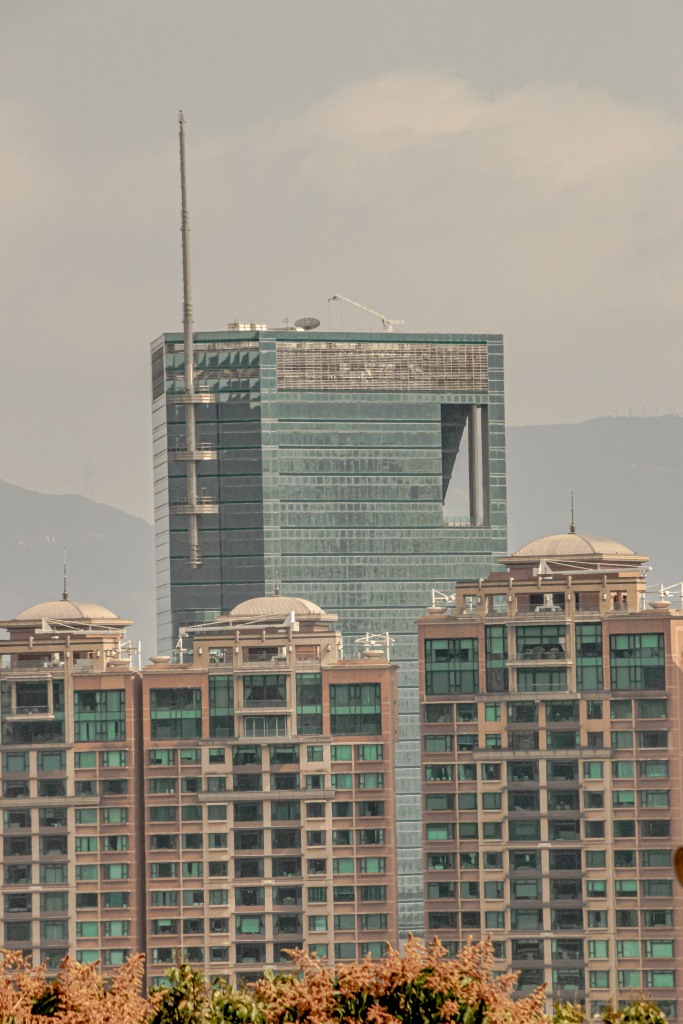


In Chinese culture, numbers can be lucky, too. In many cases, it sounded to me like the determination of whether something is lucky or not has to do with whether the word for that thing has a homonym for something lucky or unlucky. For example, most Chinese have a fondness for the number 8, which sounds like the words for success or prosperity. But the Chinese government decided that the 2008 Beijing Olympics would be started at 8:08:08 pm on 08-08-08. The number6 sounds like the words for smoothness or easy flow. The number 2 is lucky, and so is number 13. By contrast, the number 4 is the most unlucky number, because it is a word which sounds like the word for death.

There are also lucky colors. Red is the luckiest color. Brides wear red for the tea ceremony before their weddings. Also, red packets are given for New Year’s packets or wedding gifts. But you should never give a clock for a gift, because clock is a word that sounds like the words for “preparing for the end”. Finally, many business establishments will have little statues of waving cats (“Fortune Cats”), because the left palm beckons good fortune, while the right palm beckons wealth.
From the Kowloon side, we traveled across Victoria Harbor to Hong Kong Island by taking the tunnel (one of three) under the harbor. The total size of the whole area of Hong Kong including the islands and mainland pieces, is 440 square miles. Jim’s top “must do” for this day was to ride the Peak Tram up to its last stop in the Wan Hai neighborhood. On the way over, we saw the Hong Kong Visitor and Convention Center on Causeway Bay. The Peak Tram was built in 1888, and goes up 440 meters, on one of steepest gradients in the world (about 24-25 degrees). It’s so steep that the tram cars all have little speed bumps in the floor so you don’t slide if you are standing up while riding. On the way up, we passed a midpoint station which figured in the movie, “Love Is A Many Splendored Thing”. The views from the top are awe-inspiring, and you can even see a compound on top of one of the neighboring peaks which is rumored to be owned by Jackie Chan. Along Peak Road, near the top, the minimum cost is $10,000/square foot for mansions up there. The average price near $50 million (U.S.)!


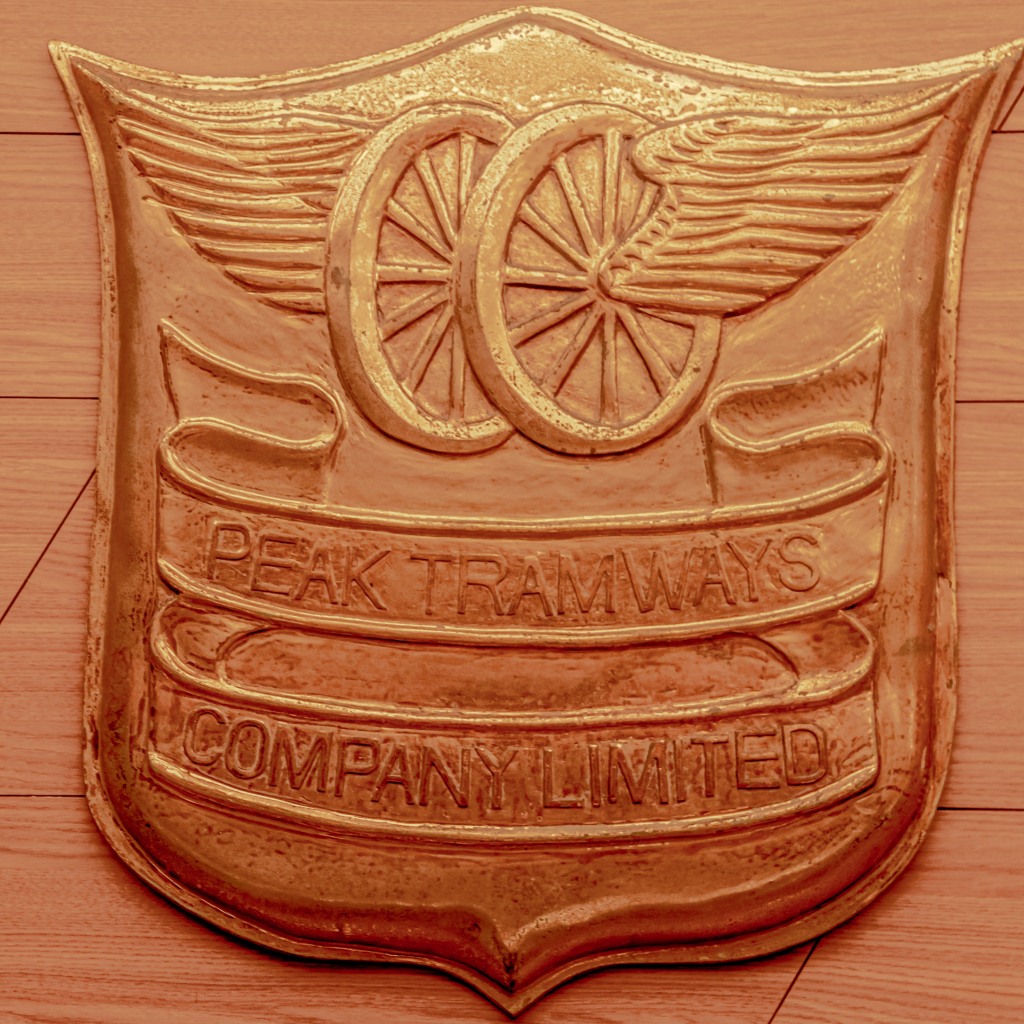




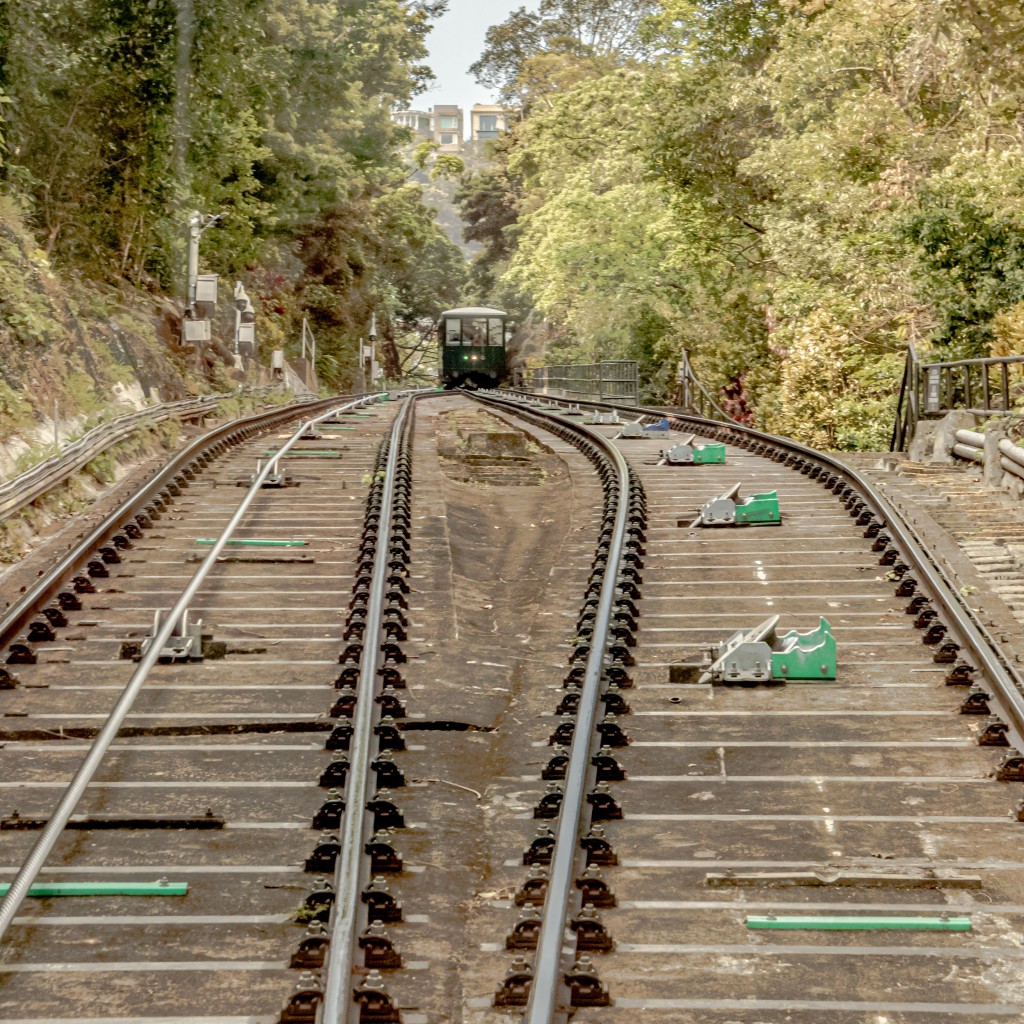


















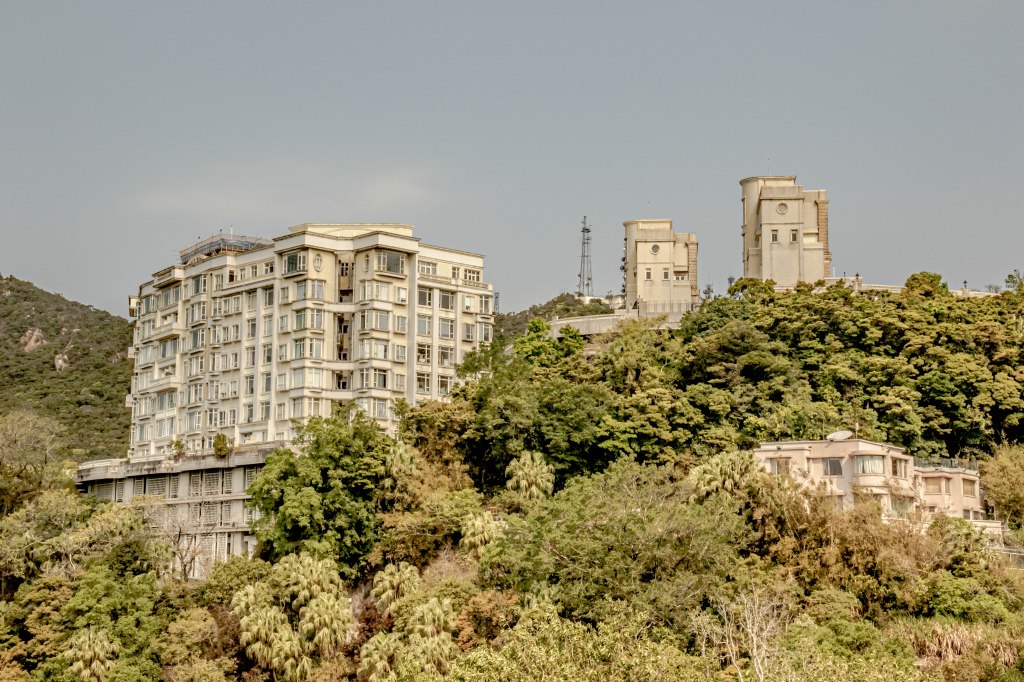



As we drove down Peak Road towards Repulse Bay, one compound near the top was very interesting because it still maintained its original style. That traditional house was owned by Wong family, the patriarch of whom had 8 wives (polygamy was legal until 1972). The house was built in the 1930s, and also featured in “Love is a Many Splendored Thing”.

Our guide used our car time to teach us a few basic phrases of Chinese:
Ni hau– hello
Shih shih-thank you
Ho-Good; Ho Ho means very good.
Our next explorations were in Repulse Bay, which in Chinese means Shallow Bay. On the way, we passed the best known apartment building with a dragon hole. This area is very popular, and close to the old Stanley Market. In feng shui, water means wealth, and good fortune. Therefore, bays are considered very good feng shui because they encircle and hold good luck in. We walked along the seaside, where there were some temples.
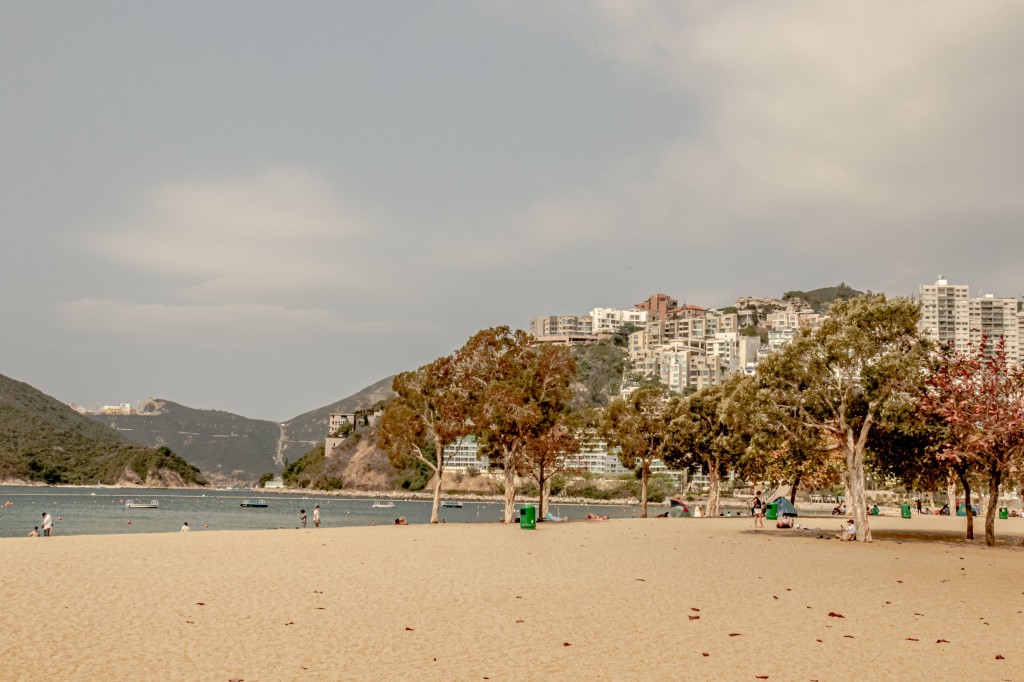



Right on the seaside, there is a temple complex which was constructed by a local lifeguard society by collecting donations, and it is both whimsical and lovely. We walked under the arched gate called Arched Gate of Longevity, right next to the Bridge of Longevity, because every time you walk over it, you add three days to your life. Needless to say, we both walked over and back! The temple right next to the gate had two main statues; the first statue is the goddess of wealth, and people were leaving prayers with her. The big one was goddess of the sea, Tin Hau.



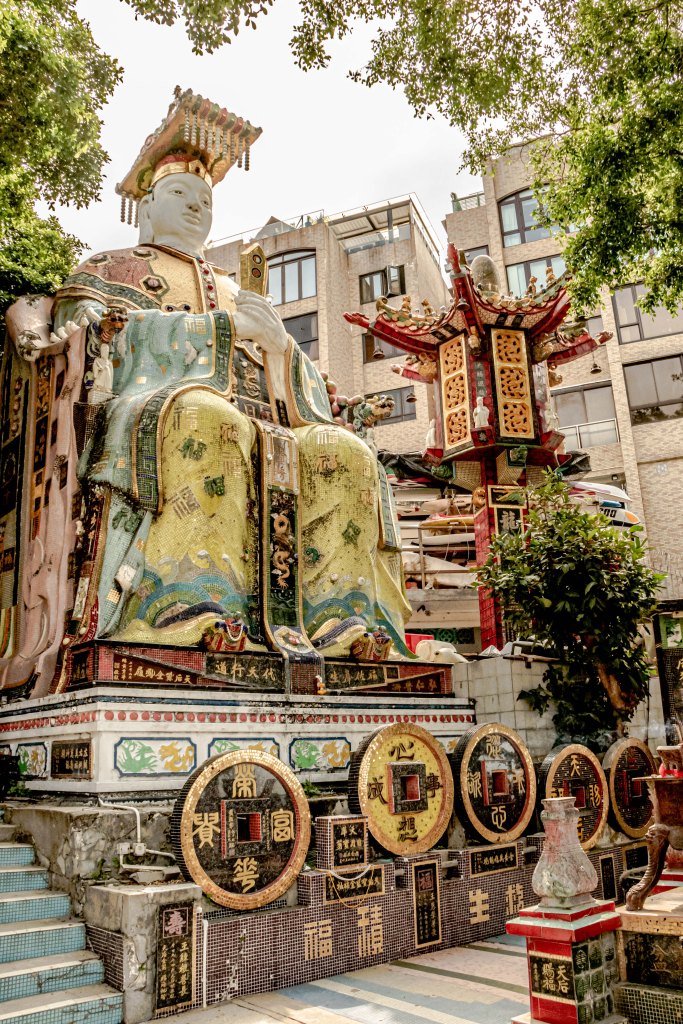






Our next stop was the Stanley Market, where I managed to find a silver charm of a Chinese junk. Then it was on to another main event for the day; a dim sum lunch! We invited our guide to lunch with us so he could help us figure out what we wanted, and to explain the etiquette of dining here to us.




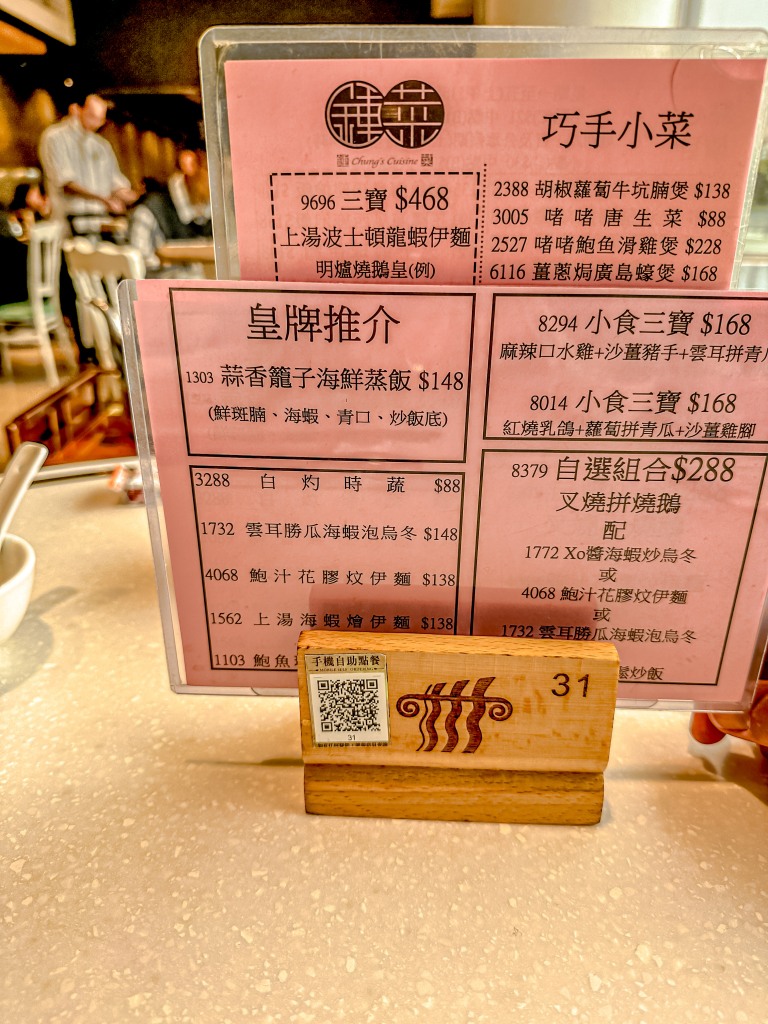

Dim means to touch, and Sum means the heart; so Dim sum means to touch the heart. We ate at Chung Cuisine, upstairs in the Stanley mall by Stanley Market, a very traditional restaurant which appeared to be a favorite with the locals. Jim and I were clearly the only Westerners there. To say “good meal”, say “Ho Mae”. We certainly had a Ho Ho Mae!

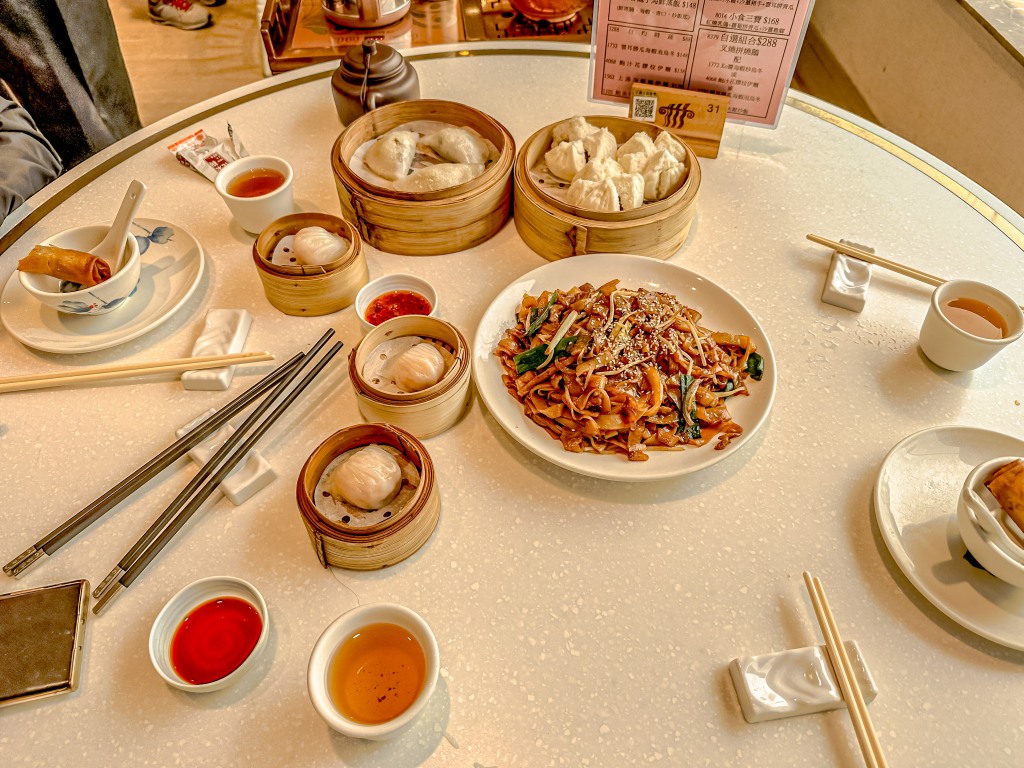

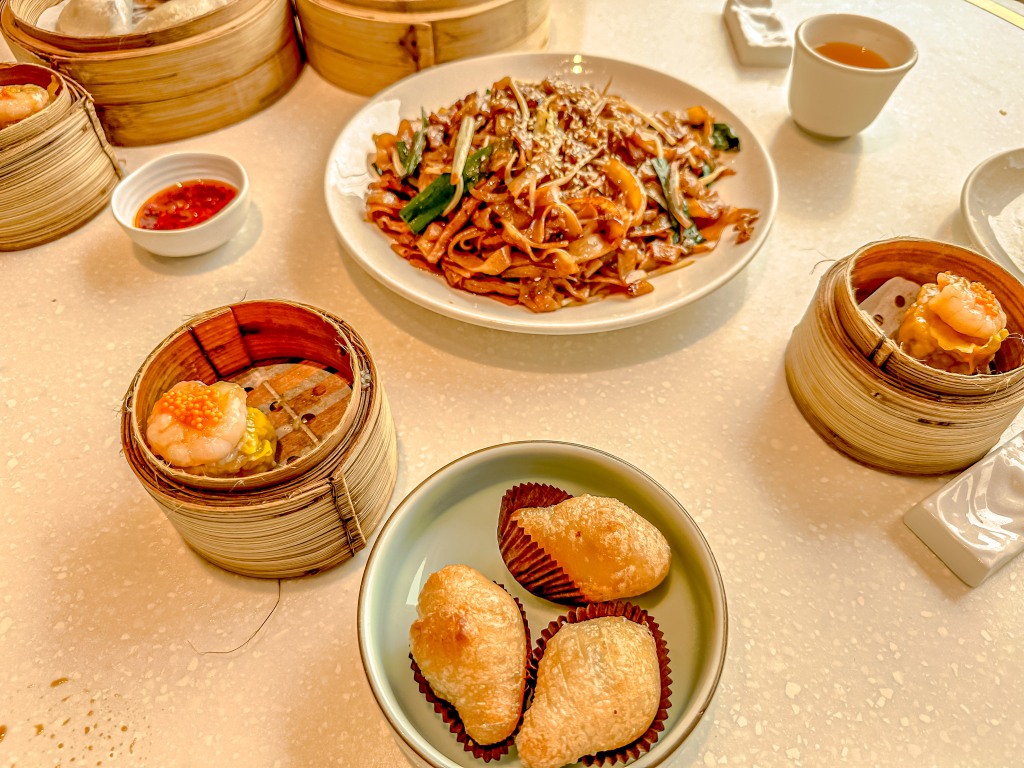
Then our driver took us to Aberdeen floating village for a sampan ride. There used to be a famous floating restaurant called the Jumbo Restaurant, and its sister property, Tai Pak Seafood. The Jumbo Restaurant featured in many movies, including the James Bond film, “The Man With the Golden Gun”. Sadly, the restaurant closed during pandemic, then sunk. Typhoons a threat here, so there are typhoon shelters everywhere. Aberdeen Harbor is actually also a typhoon shelter. There are 13 typhoon harbors to provide safe moorage for the fishermen.


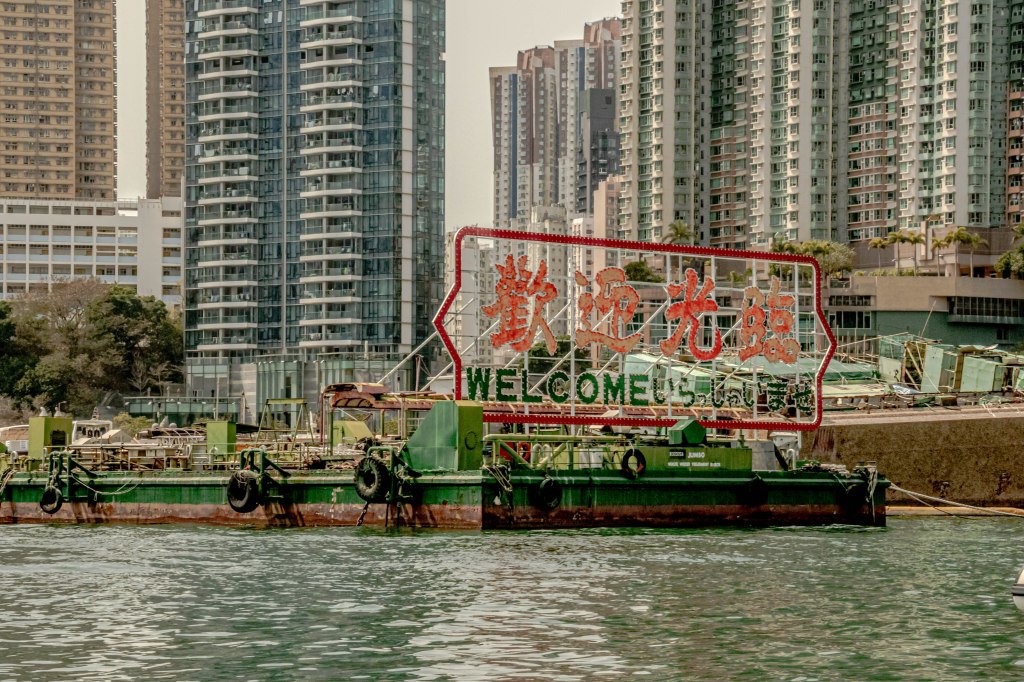










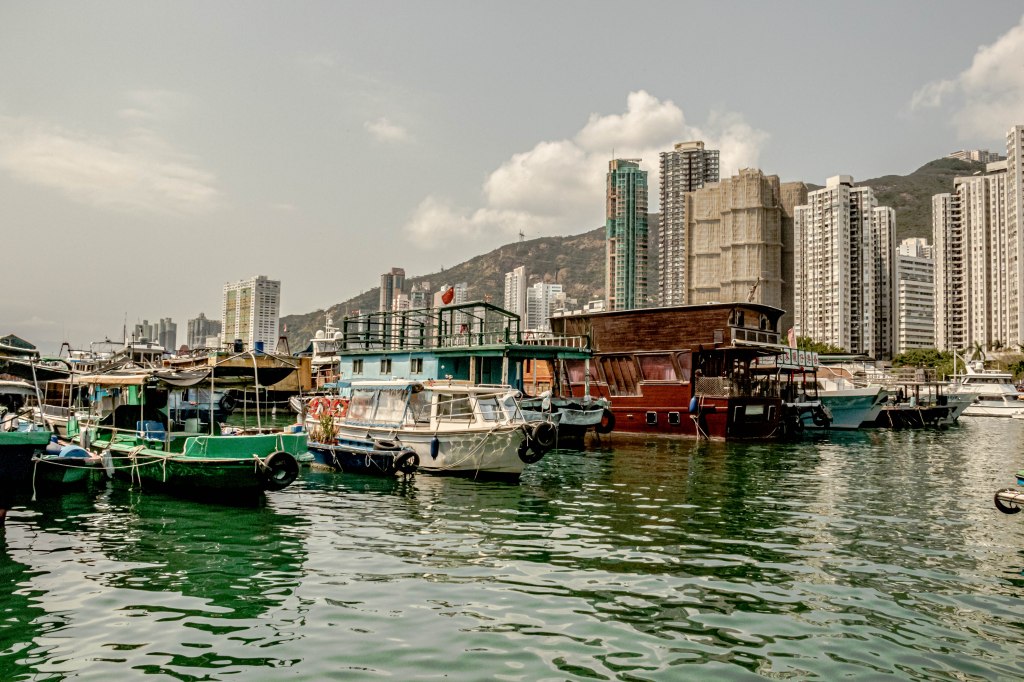



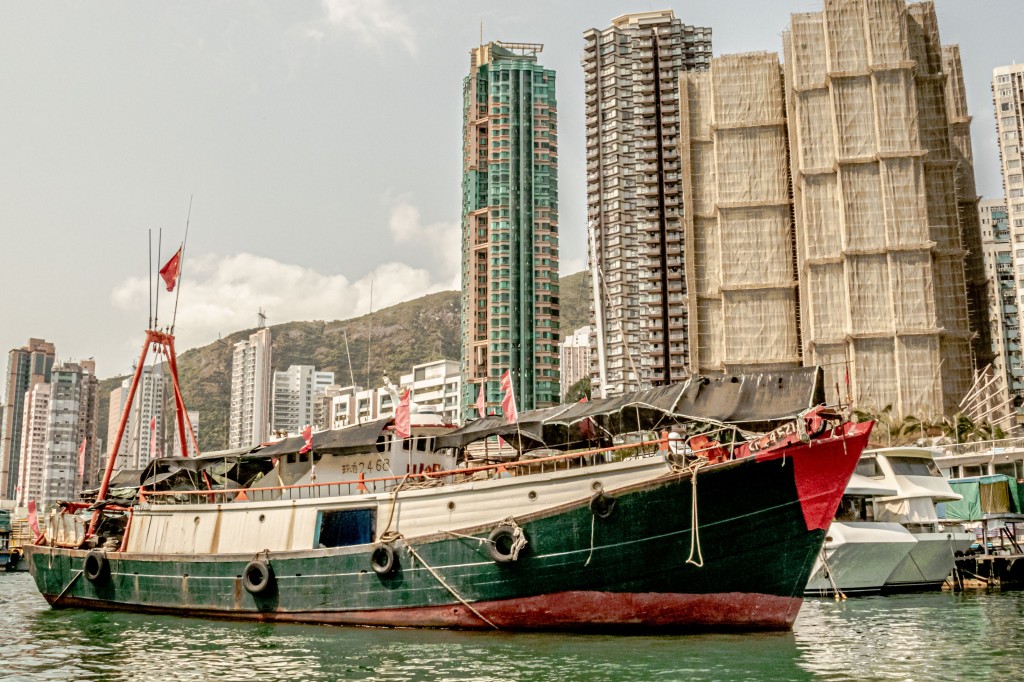




Although we didn’t really need it after our huge lunch, we stopped for custard tarts to sample this iconic Hong Kong treat. Portuguese traders originally brought them to Hong Kong, but they are now wholly local. Our tour took us along Queen’s Rd. through the original Central Business District. Then we drove up into Victoria Peak along Hollywood road to Man Mo Temple. This is probably the most visited temple in Hong Kong. It is a Daoist temple to the gods Man and Mo. Man is the god of literature and learning, and he is usually pictured with a pen/scribe. Mo is the god of righteousness, and is usually pictured with a sword. It was very interesting, but the incense smoke was almost overpowering, and lingered in your clothes.




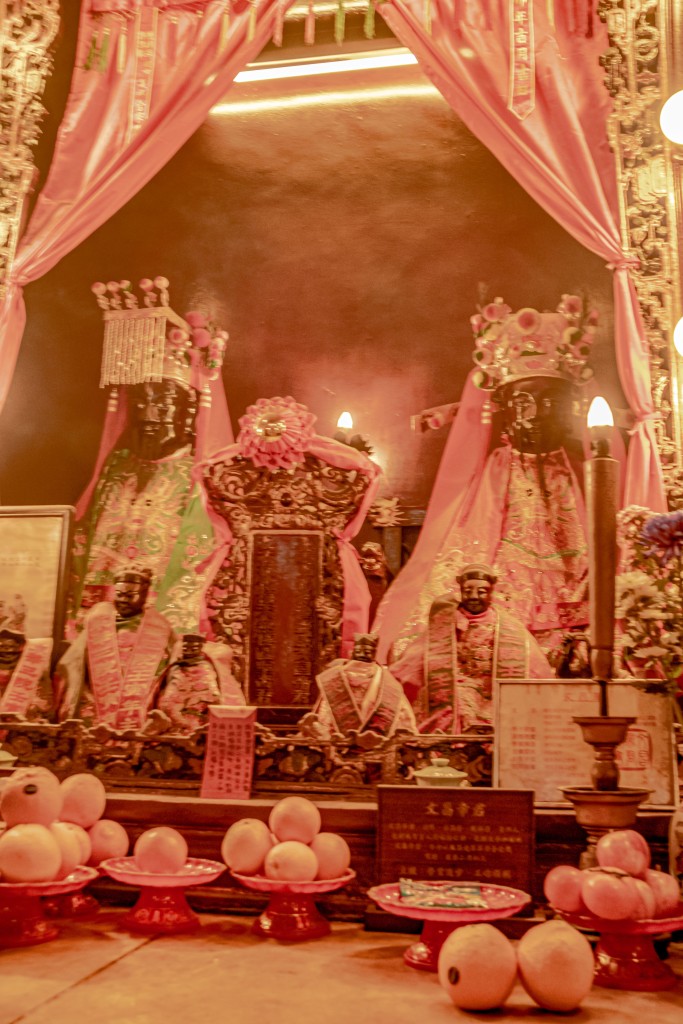
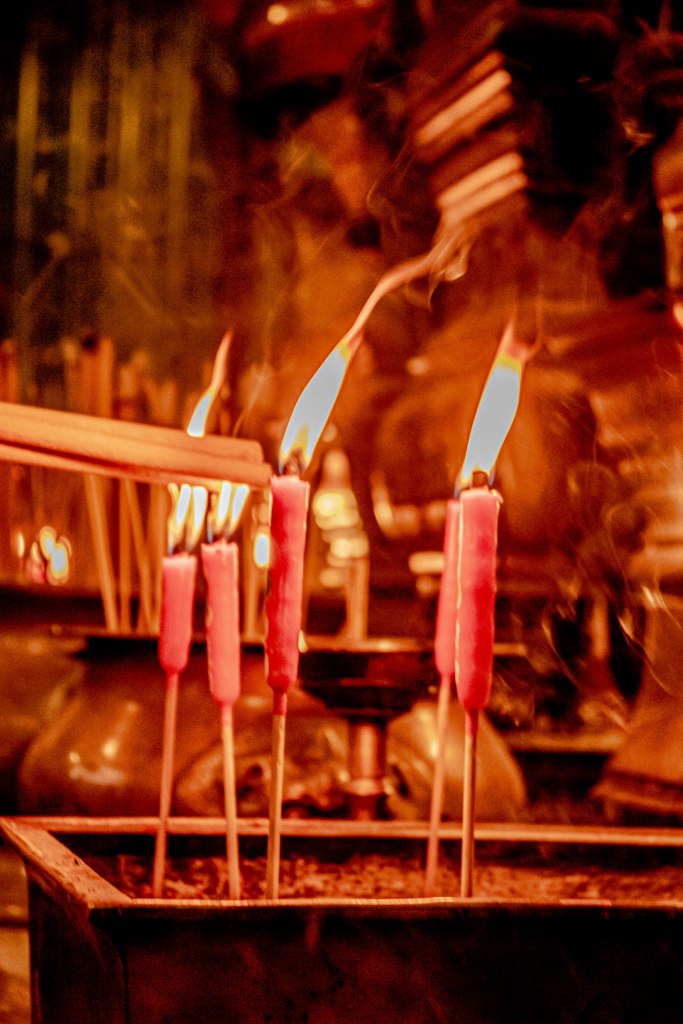

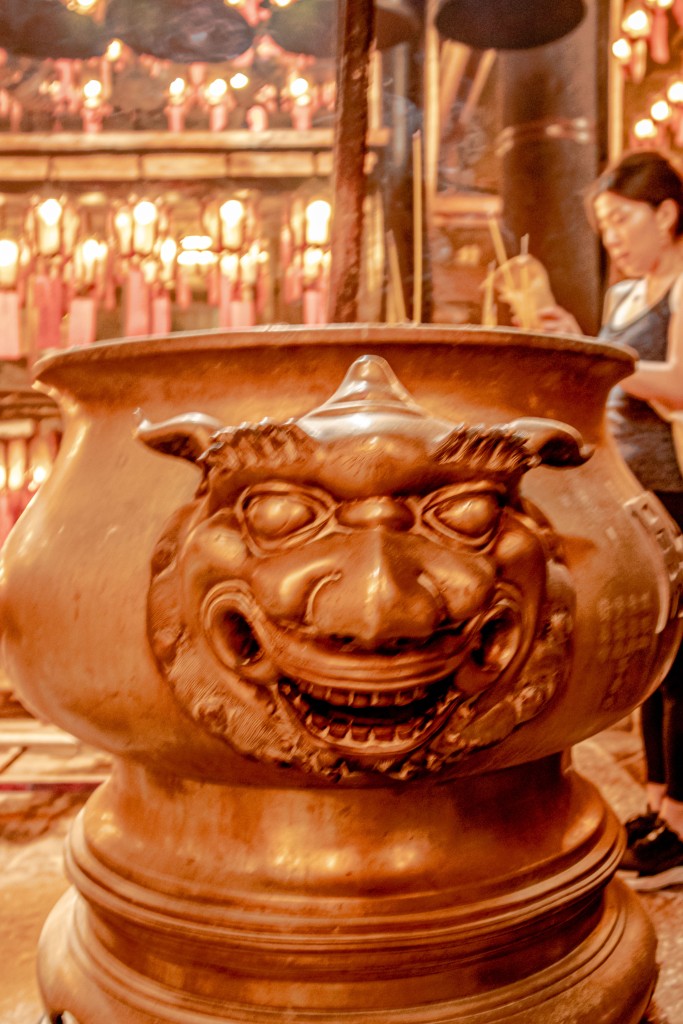

On our guide’s recommendation, we stopped at the “Alley for the products of North and South”, which features dried products of all types, including the “four treasures of the sea”: abalone, sea cucumber, shark fins, and fish maw (air bladders). Yuck and double yuck! Fortunately, I did not see any pangolin scales or I might have gone ballistic.
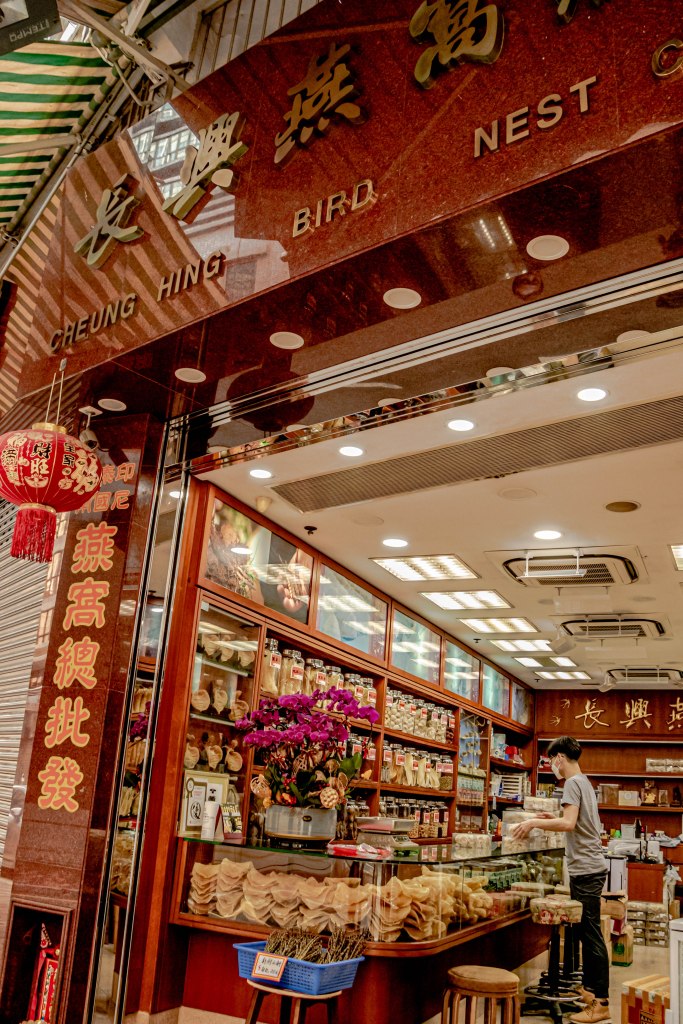


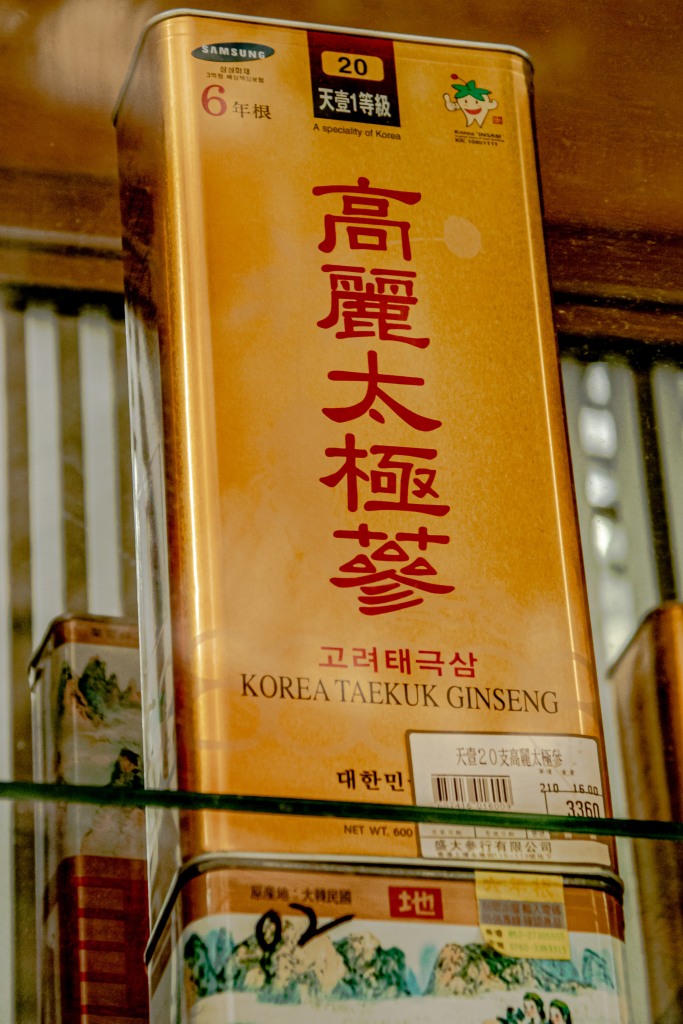

Finally, we crossed over Victoria Harbor back to the Kowloon side, then under another tunnel (the west tunnel) to get to a beautiful pedestrian causeway along Victoria Harbor looking at the island of Hong Kong. This lookout spot offers great views, but if you want even better ones, you can pay to go up to the top of the tallest building (ICC-International Commerce Center), which has 118 floors. There is a viewing platform on 100th floor called Sky100, and amRitz Hotel on floors 103-118. There is also a bar called Ozone on the top floor, where a G & T costs $30.

We ended our day with a walk along The Promenade overlooking HK waterfront. It is a great place to watch the nightly light show on the harbor at 8 pm. The part which juts out is called the “Avenue of the Stars”. Nathan Road runs right by the Peninsula Hotel, and is the beginning of the “Golden Mile” .We saw a helicopter landing on the roof of the Peninsula Hotel. Sadly, we couldn’t see the light show from the ship, but just the skyscrapers of downtown all lit up were spectacular enough!
